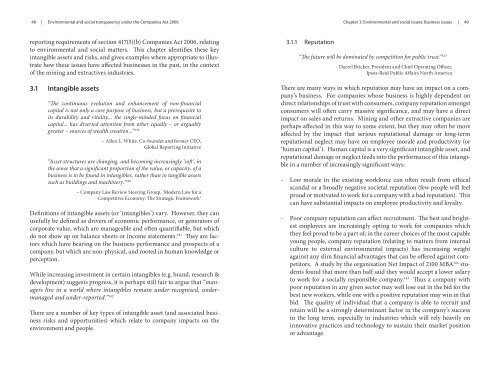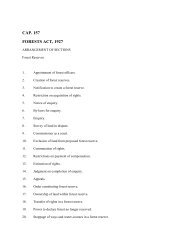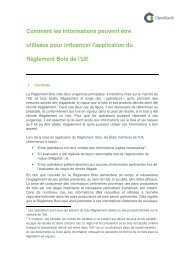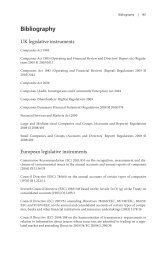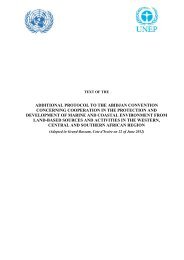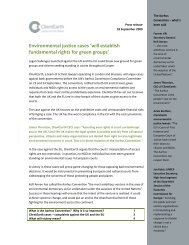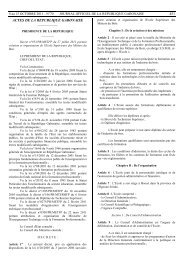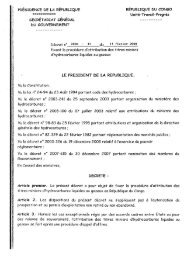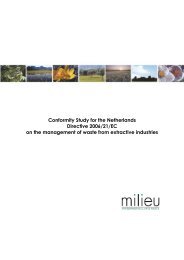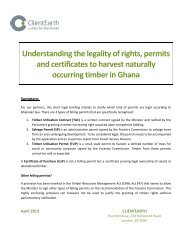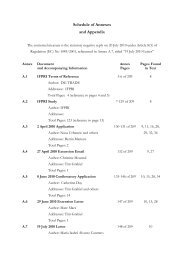Environmental and social transparency under the ... - ClientEarth
Environmental and social transparency under the ... - ClientEarth
Environmental and social transparency under the ... - ClientEarth
- No tags were found...
You also want an ePaper? Increase the reach of your titles
YUMPU automatically turns print PDFs into web optimized ePapers that Google loves.
48 | <strong>Environmental</strong> <strong>and</strong> <strong>social</strong> <strong>transparency</strong> <strong>under</strong> <strong>the</strong> Companies Act 2006Chapter 3: <strong>Environmental</strong> <strong>and</strong> <strong>social</strong> issues: Business issues | 49reporting requirements of section 417(5)(b) Companies Act 2006, relatingto environmental <strong>and</strong> <strong>social</strong> matters. This chapter identifies <strong>the</strong>se keyintangible assets <strong>and</strong> risks, <strong>and</strong> gives examples where appropriate to illustratehow <strong>the</strong>se issues have affected businesses in <strong>the</strong> past, in <strong>the</strong> contextof <strong>the</strong> mining <strong>and</strong> extractives industries.3.1 Intangible assets“The continuous evolution <strong>and</strong> enhancement of non-financialcapital is not only a core purpose of business, but a prerequisite toits durability <strong>and</strong> vitality... <strong>the</strong> single-minded focus on financialcapital... has diverted attention from o<strong>the</strong>r equally – or arguablygreater – sources of wealth creation...” 139– Allen L. White, Co-fo<strong>under</strong> <strong>and</strong> former CEO,Global Reporting Initiative“Asset structures are changing, <strong>and</strong> becoming increasingly ‘soft’, in<strong>the</strong> sense that a significant proportion of <strong>the</strong> value, or capacity, of abusiness is to be found in intangibles, ra<strong>the</strong>r than in tangible assetssuch as buildings <strong>and</strong> machinery.” 140– Company Law Review Steering Group, ‘Modern Law for aCompetitive Economy: The Strategic Framework’Definitions of intangible assets (or ‘intangibles’) vary. However, <strong>the</strong>y canusefully be defined as drivers of economic performance, or generators ofcorporate value, which are manageable <strong>and</strong> often quantifiable, but whichdo not show up on balance sheets or income statements. 141 They are factorswhich have bearing on <strong>the</strong> business performance <strong>and</strong> prospects of acompany, but which are non-physical, <strong>and</strong> rooted in human knowledge orperception.While increasing investment in certain intangibles (e.g. br<strong>and</strong>, research &development) suggests progress, it is perhaps still fair to argue that “managerslive in a world where intangibles remain <strong>under</strong>-recognised, <strong>under</strong>managed<strong>and</strong> <strong>under</strong>-reported.” 142There are a number of key types of intangible asset (<strong>and</strong> associated businessrisks <strong>and</strong> opportunities) which relate to company impacts on <strong>the</strong>environment <strong>and</strong> people.3.1.1 Reputation“The future will be dominated by competition for public trust.” 143- Darrel Bricker, President <strong>and</strong> Chief Operating Officer,Ipsos-Reid Public Affairs North AmericaThere are many ways in which reputation may have an impact on a company’sbusiness. For companies whose business is highly dependent ondirect relationships of trust with consumers, company reputation amongstconsumers will often carry massive significance, <strong>and</strong> may have a directimpact on sales <strong>and</strong> returns. Mining <strong>and</strong> o<strong>the</strong>r extractive companies areperhaps affected in this way to some extent, but <strong>the</strong>y may often be moreaffected by <strong>the</strong> impact that serious reputational damage or long-termreputational neglect may have on employee morale <strong>and</strong> productivity (or‘human capital’). Human capital is a very significant intangible asset, <strong>and</strong>reputational damage or neglect feeds into <strong>the</strong> performance of this intangiblein a number of increasingly significant ways:- Low morale in <strong>the</strong> existing workforce can often result from ethicalsc<strong>and</strong>al or a broadly negative societal reputation (few people will feelproud or motivated to work for a company with a bad reputation). Thiscan have substantial impacts on employee productivity <strong>and</strong> loyalty.- Poor company reputation can affect recruitment. The best <strong>and</strong> brightestemployees are increasingly opting to work for companies which<strong>the</strong>y feel proud to be a part of; in <strong>the</strong> career choices of <strong>the</strong> most capableyoung people, company reputation (relating to matters from internalculture to external environmental impacts) has increasing weightagainst any slim financial advantages that can be offered against competitors.A study by <strong>the</strong> organisation Net Impact of 2100 MBA 144 studentsfound that more than half said <strong>the</strong>y would accept a lower salaryto work for a <strong>social</strong>ly responsible company. 145 Thus a company withpoor reputation in any given sector may well lose out in <strong>the</strong> bid for <strong>the</strong>best new workers, while one with a positive reputation may win in thatbid. The quality of individual that a company is able to recruit <strong>and</strong>retain will be a strongly determinant factor in <strong>the</strong> company’s successin <strong>the</strong> long term, especially in industries which will rely heavily oninnovative practices <strong>and</strong> technology to sustain <strong>the</strong>ir market positionor advantage.


